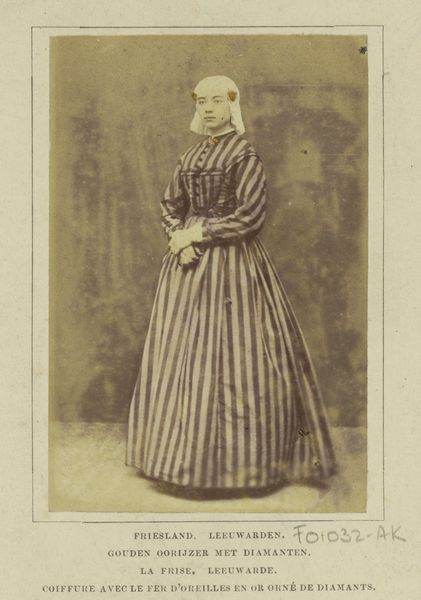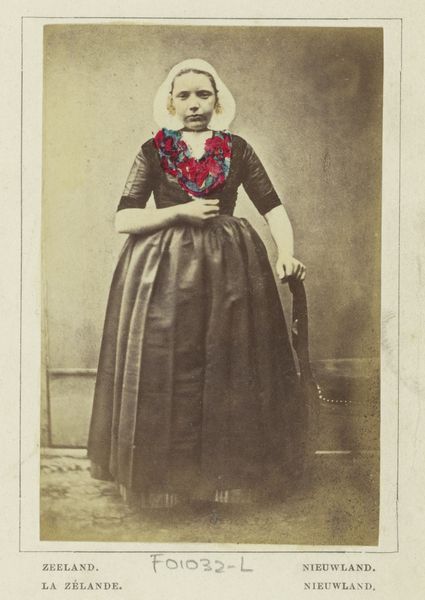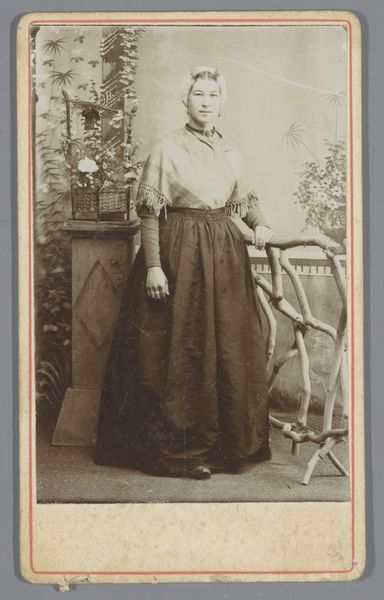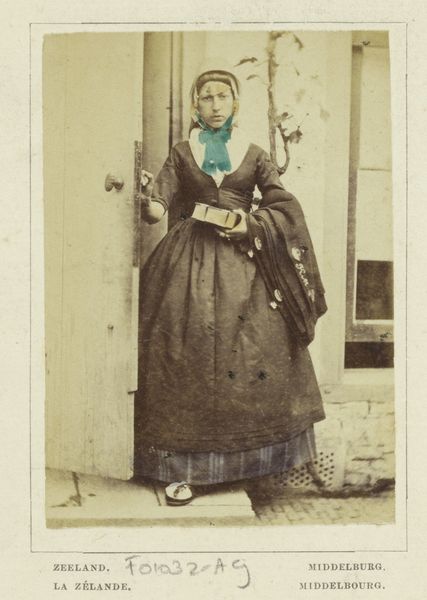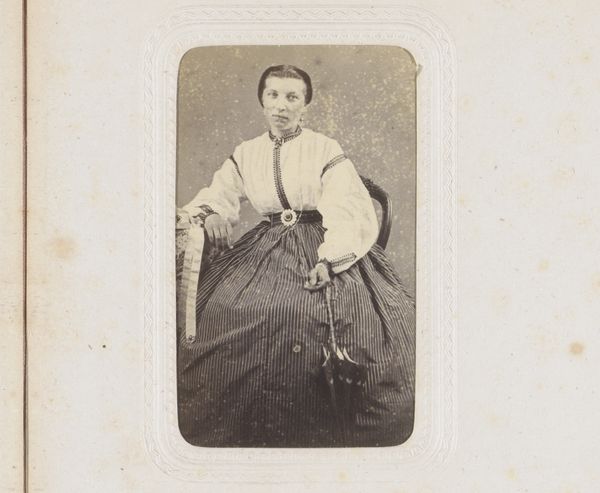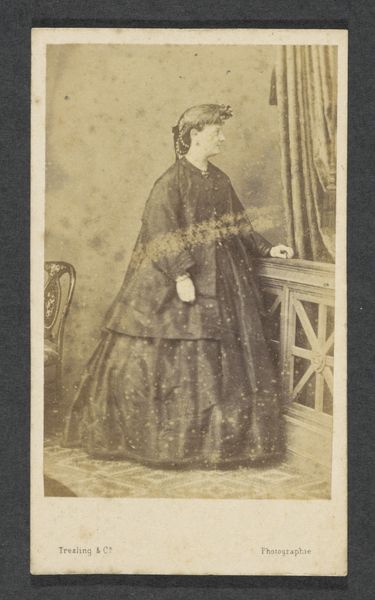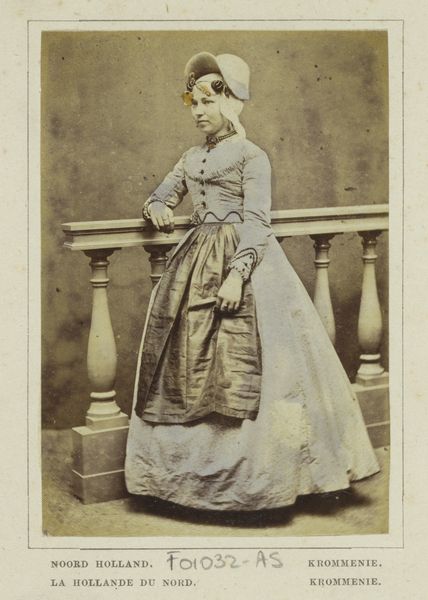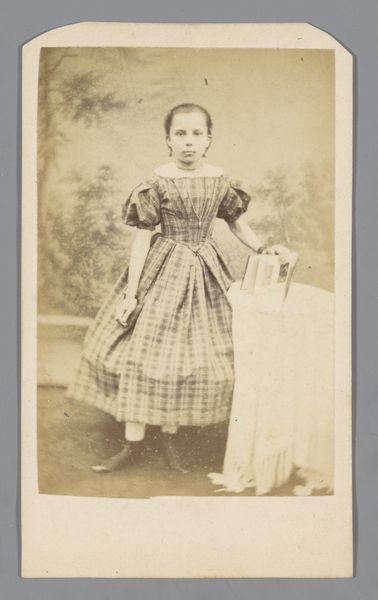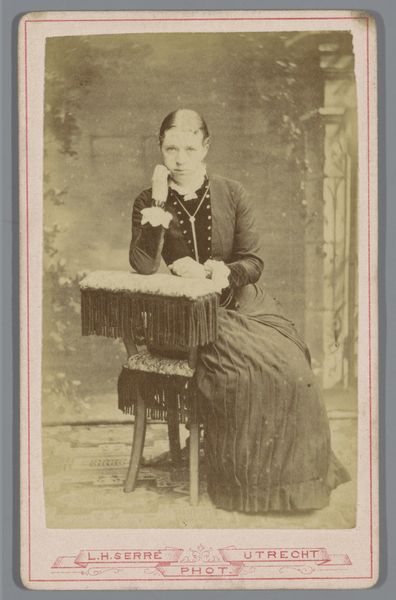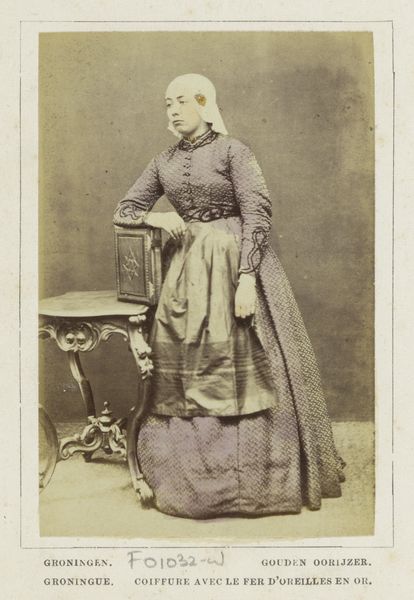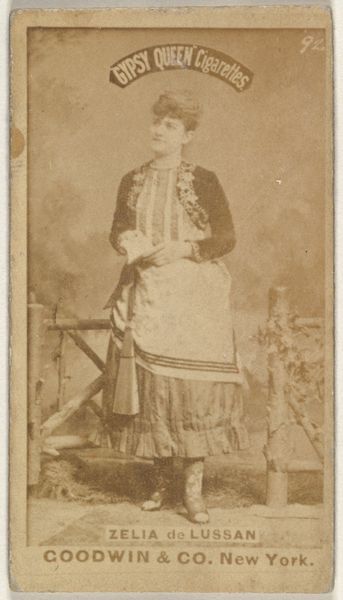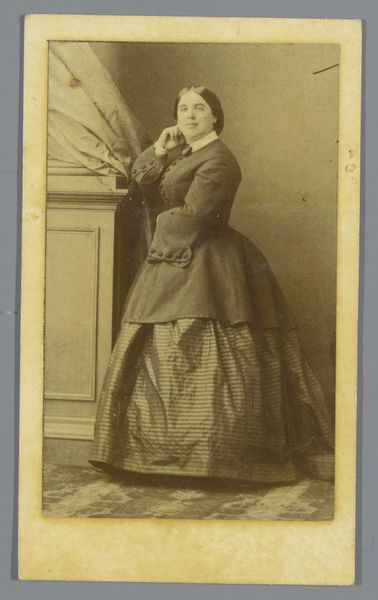
Portret van een onbekende vrouw in klederdracht van Scheveningen, Zuid-Holland 1860 - 1890
0:00
0:00
photography
#
portrait
#
dutch-golden-age
#
photography
#
historical photography
#
genre-painting
#
realism
Dimensions: height 86 mm, width 59 mm
Copyright: Rijks Museum: Open Domain
Curator: Here we have a fascinating photograph titled "Portret van een onbekende vrouw in klederdracht van Scheveningen, Zuid-Holland," placing it somewhere between 1860 and 1890. It now resides in the Rijksmuseum. What are your initial impressions? Editor: The pose immediately strikes me. She stands with her arms crossed, a firm stance that exudes a certain resilience. The muted palette contrasted with that vibrant flash of red in her skirt creates a compelling visual tension. Curator: Absolutely. Focusing on its context, this portrait provides a glimpse into the material culture of Scheveningen. The intricate detailing on her garments points to specific craft traditions and the labour involved in producing such attire. This clothing speaks volumes about her identity and place within that society. Editor: True, the textures are incredible considering the age of this image. Structurally, it’s interesting how the backdrop—a painted balustrade and indistinct landscape—serves as both a setting and a subtle commentary on constructed realities within photography itself. The backdrop feels very staged, but she, somehow, doesn't. Curator: Exactly, these staged elements became a commodity. Think about the economics of photography studios and how they catered to desires for representation and remembrance within a growing middle class. This wasn't just about documenting a woman, but about participating in a new form of social currency. Editor: I find her gaze the most captivating detail, her eyes fixed and direct. Considering Realism as a movement, she's not romanticized or idealized, just captured, revealing, perhaps, more than the photographer intended. Curator: Indeed. The photographer, Andries Jager, likely saw her as representative of Scheveningen, of Dutch regional identity, ready to be captured and sold in printed reproductions. What do you think, in summary? Editor: Ultimately, for me, this portrait resides within the tension between formal composition and the inherent presence of the sitter; a stoic and captivating woman. Curator: A remarkable intersection of craft, social documentation, and artistic expression, telling a nuanced story about 19th-century Dutch society through a single photographic image.
Comments
No comments
Be the first to comment and join the conversation on the ultimate creative platform.
